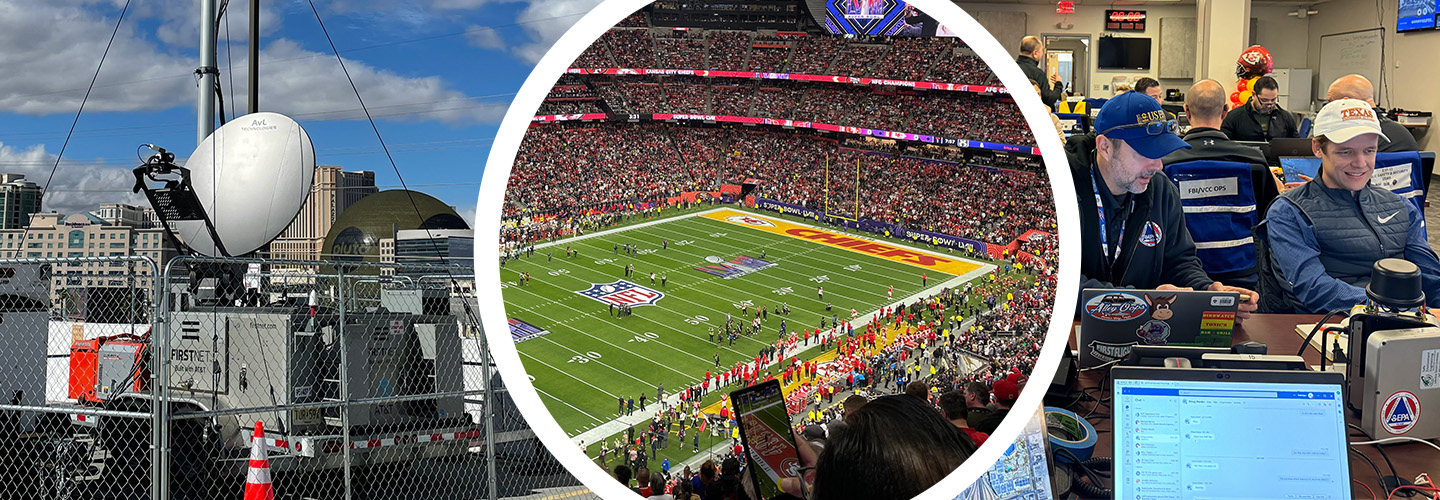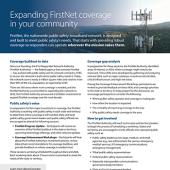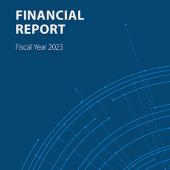This blog is a repost from iCHIEFS Magazine, originally published in the Summer 2024 edition.
In the fast-paced world of emergency response, effective communication can mean the difference between life and death. Many advances in communications technology have taken place over the years, and public safety communications have come a long way since two-channel radios and paper records.
One major development of recent times is FirstNet, the first nationwide broadband network built specifically for public safety. With a dedicated network core that separates public safety traffic from non-public safety traffic, FirstNet is changing the communications landscape for countless first responders.
The FirstNet network, operated by the FirstNet Authority as an independent agency within the U.S. Department of Commerce’s National Telecommunications and Information Administration (NTIA), enables the fire service, EMS, and law enforcement to do their jobs more safely and effectively, no matter where they are located.
“Now there’s a reliable, secure, dedicated, and prioritized broadband network for us to use to communicate and share data. That didn’t exist a decade ago,” says Michael Varney, the Senior Director of Stakeholder Collaboration at the First Responder Network Authority, or FirstNet Authority, and a 40-year veteran of the fire service. “When we were responding to [past] incidents, we had no more priority access to any of those network resources than anybody else. Our fire apparatus had no more priority than the minivan parked next to us at the light with everybody streaming their videos.”
FirstNet changes this. The network is exclusive to emergency services, giving responders the ability to access the resources they need in real time as they respond to incidents. They can look up information about infrastructure near the scene, locate water facilities, and instantly share data with their response partners, all within a secure, protected network built specifically for their use. In short, FirstNet ensures emergency responders always have access to the network — resulting in faster, stronger, and more effective communications for all first responders.
The launch of FirstNet
The 9/11 terrorist attacks revealed serious communication challenges among emergency responders. The channels in place didn’t allow for interoperability across agencies, and phone lines were quickly overwhelmed with an influx of calls that impeded effective communication among firefighters, EMS, and law enforcement alike.
“Although the problem had been realized for some time, that event really brought it to the forefront,” Varney says.
The 9/11 Commission Report recommended the establishment of a nationwide public safety broadband network. For a decade, public safety bodies worked with national associations across all emergency response disciplines to encourage the federal government to develop this network.
In 2012, Congress responded by creating the FirstNet Authority as part of the Middle Class Tax Relief and Jobs Creation Act. The FirstNet Authority began its work as an agency by prioritizing the building, deploying, and operating of a dedicated public safety broadband network. In 2017, they contracted AT&T to create the network. Since then, the network has been built out to cover 99% of the U.S. population.
“There’s over 28,000 public safety agencies and organizations that use the network in their daily responses, and that adds up to 5.9 million data connections for different devices that are connected to the network every day,” Varney explains.
In February 2024, the FirstNet Authority launched the next phase of FirstNet: an investment of more than $8 billion over 10 years to expand the network. Of this, $6.3 billion will go toward delivering full 5G capabilities on FirstNet, expanding mission-critical services, and enhancing coverage, while approximately $2 billion will be dedicated to coverage enhancements.
Emergency response in Las Vegas
The Clark County Fire Department in Las Vegas, Nevada, began utilizing FirstNet about five years ago. The department uses it for routine communications. Most of their chief officers and engine companies have phones with FirstNet service, where they can communicate with each other via audio and video calls, text messages, and messaging apps, as well as with the dispatch office.
“Las Vegas is a fast-growing area, and that’s one of the reasons FirstNet has proven so useful for Clark County,” says Assistant Fire Chief Brian O’Neal.
“The area is growing faster than the infrastructure build-out can keep up with, so we were really looking for a communications solution that was adaptable to our needs, was able to grow with us, and that proved reliable in an emergency. That ended up being FirstNet.”
While O’Neal said FirstNet took adjusting to at first, the network’s support team was helpful in providing resources and guidance.
“They’re really responsive. I think the [quality of their] service separates them,” says O’Neal. “For the things we do, we can’t always rely on [the technology that’s] here right now. Sometimes we have to build the network we want to work with. FirstNet is helping us do just that.”
The Clark County Fire Department has relied on FirstNet for events such as Super Bowl LVIII, the Formula 1 Las Vegas Grand Prix, and the Electric Daisy Carnival, all of which involve a huge emergency response presence and the use of hundreds of communication channels. The Electric Daisy Carnival is one of the most extreme examples of what an “all hands” event can look like for first responders — it’s one of the largest music festivals in the world.
“[The Electric Daisy Carnival] is a challenging event because it’s really big. It’s spread out. It’s 150,000 to 180,000 people packed into the Las Vegas Motor Speedway,” Chief O’Neal explains.
The event is far enough outside of town that there isn’t a lot of existing communications infrastructure there. FirstNet ensures the responders from Clark County Fire Department can communicate even while they’re outside the more urban environment they usually operate in.
“Our communications are resilient, and we’re not going to overload the system when we do an event with hundreds of thousands of people, where they’re all trying to access their devices,” O’Neal says. “We know the network is going to be strong [enough] to handle it, because it’s dedicated to our use [alone].”
Further developments
As FirstNet receives further investment, O’Neal says he’d like to see the continued adoption of the network by fire and rescue departments and more buildout of FirstNet infrastructure across the United States, particularly outside of urban areas. O’Neal also highlights the importance of strong communications within large, multilevel buildings.
“As wireless speeds increase, penetration into buildings, it seems, is going down. We need to make sure that when we’re going into these giant casinos here, up into towers, or into some of the big stadiums and huge open spaces that we have, we’re able to continue to communicate as well as if we were on the outside of that building,” O’Neal explains.
“Prioritizing in-building communication and making sure those antenna systems are robust — I think that should be a priority.”
To improve and further the development of FirstNet, the FirstNet Authority meets with stakeholders such as the International Association of Fire Chiefs (IAFC) — as well as other emergency response organizations, communication centers, and law enforcement agencies — to learn about their operational needs, their experiences using the network, and suggested strategies for filling any gaps identified by responders on the ground.
“The actions we take and the priorities we follow come directly from public safety experts,” Varney says. As the network expands, it’s clear that those priorities will only become more critical to its continued success.




















